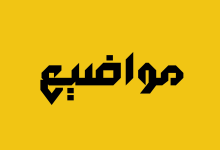Tehran, the bustling capital city of Iran, stands as a testament to the nation’s rich history, vibrant culture, and dynamic modernity. Nestled in the foothills of the Alborz mountain range, Tehran serves as the political, economic, and cultural heart of Iran, pulsating with life and energy.
Geography and Climate:
Situated in the north-central part of Iran, Tehran spans a vast area, with its landscape ranging from urban sprawls to picturesque mountains. The city enjoys a semi-arid climate characterized by hot, dry summers and cold, sometimes snowy winters. The Alborz mountains to the north play a significant role in Tehran’s climate, moderating temperatures and occasionally blanketing the city in snow during the winter months.
History and Heritage:
Tehran boasts a storied past that stretches back over centuries. Once a humble village, it grew in prominence during the Qajar dynasty and became the capital of Iran in the late 18th century. Since then, Tehran has witnessed rapid development and transformation, evolving into a bustling metropolis. Despite its modern facade, Tehran retains echoes of its historical legacy through landmarks such as the Golestan Palace, a UNESCO World Heritage Site, and the majestic Milad Tower, which offers panoramic views of the city.
Cultural Tapestry:
As the cultural epicenter of Iran, Tehran is a melting pot of diverse influences, reflected in its art, architecture, cuisine, and traditions. The city is home to numerous museums, galleries, and theaters, including the National Museum of Iran, showcasing artifacts that chronicle the country’s rich heritage. Tehran’s bazaars, such as the bustling Grand Bazaar, offer a glimpse into Iran’s commercial and social fabric, where vibrant colors, exotic scents, and the rhythmic hum of trade converge.
Education and Innovation:
With a strong emphasis on education and research, Tehran boasts some of Iran’s most prestigious universities and academic institutions. Tehran University, founded in 1934, stands as a beacon of higher learning, while the Sharif University of Technology fosters innovation and scientific advancement. The city’s commitment to education has fueled its emergence as a hub for technology, innovation, and entrepreneurship in the region.
Urban Dynamics:
Tehran’s urban landscape is characterized by a juxtaposition of modern skyscrapers, historic landmarks, and bustling thoroughfares. The city’s transportation network, including an extensive metro system and bustling streets, facilitates the movement of millions of residents and visitors daily. Despite facing challenges such as traffic congestion and pollution, Tehran continues to evolve, with ongoing urban development projects aimed at enhancing livability and sustainability.
Culinary Delights:
Tehran’s culinary scene is as diverse as its population, offering a tantalizing array of Persian delicacies and international cuisine. From aromatic kebabs and fragrant rice dishes to savory stews and sweet pastries, Tehran’s restaurants and street vendors cater to every palate. Teahouses, known as “Chaikhanehs,” are ubiquitous in the city, serving as social hubs where locals gather to unwind, converse, and savor traditional Persian tea.
Modern Outlook:
While deeply rooted in tradition, Tehran embraces modernity with open arms, evident in its thriving arts scene, fashion boutiques, and cosmopolitan lifestyle. The city’s skyline is punctuated by iconic skyscrapers, including the Azadi Tower, a symbol of Iran’s independence and progress. Tehran’s parks and green spaces offer respite from the urban hustle, providing opportunities for recreation, relaxation, and community gatherings.
In conclusion, Tehran embodies the essence of Iran’s past, present, and future, where ancient heritage intertwines with contemporary aspirations. As a dynamic metropolis nestled amidst majestic mountains, Tehran beckons travelers to explore its rich tapestry of history, culture, and innovation, offering a glimpse into the soul of Iran.
